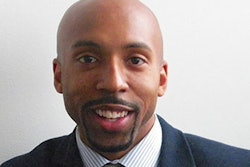In June, as the nation’s highest court handed down a predictable and yet devastating ruling striking down the use of affirmative action in college admissions, the Center for Journalism & Democracy announced its inaugural Visiting Professorship for Investigative or Data Journalism at Howard University.
Here is why this matters.
 Nikole Hannah-Jones
Nikole Hannah-Jones
The nation’s oldest private and public universities respectively, both were financed by profits from the enslavement of African-descended people. Both educated the progeny of slaveholding families. And UNC, specifically, was built largely by the labor of enslaved people. Founded in 1789, UNC would not admit its first Black student until 1955, and only under the force of a federal court order. Founded in 1636, Harvard would largely exclude the formerly enslaved and their descendants until after the great civil rights legislation of the 1960s.
Affirmative action, a program designed to make universities take affirmative, race-specific steps in admissions to help mitigate centuries of race-specific exclusion, increased the percentage of Black students at these and other historically white institutions. And yet even with affirmative action, Black students have remained significantly under-represented in higher education, particularly at the most selective schools, while being over-represented at predatory for-profit colleges.
Only for a few short decades did we make any concerted and intentional effort to include Black Americans specifically, and students of color generally, in institutions we pretend are about meritocracy and social mobility. The Supreme Court in its landmark 1954 ruling in Brown v. Board of Education, called education a centerpiece of democracy. Yet at a time when democracy is under attack, this affirmative action ruling strikes a blow at multiracial democracy by ensuring many of our universities will look less like America.
What lies ahead?
We do not have to guess what the elimination of affirmative action will bring about. As intended, enrollment of Black students at selective colleges and universities will decline substantially. We only need to look to the state of California, which saw enrollment of Black students in selective state schools plummet after the state implemented a ban on affirmative action.
Historically Black colleges and universities, Howard University among them, exist because of that long and enduring legacy of exclusion. They, unlike UNC, Harvard, and most predominantly and historically white colleges and universities, have never excluded students because of race. HBCUs were created to educate the formerly enslaved and their descendants who were prohibited from attending most institutions of higher learning in the country, but HBCUs were open to all. And despite chronic and discriminatory under-funding, HBCUs have stood as the greatest driver of social and economic mobility of Black Americans in the country.
HBCUs in states such as Mississippi, Maryland, and Tennessee have fought for hundreds of millions of dollars that states discriminatorily deprived them. The combined endowment of all 103 HBCUs is less than Harvard’s endowment alone. HBCUs receive less than 1% of federal research funding and development grants, and less than their share of state and federal funding overall.
And yet, HBCUs award 17% of all bachelor’s degrees and 24% of all STEM-related bachelor’s degrees earned by Black Americans despite representing just 3% of public and private nonprofit colleges and universities. HBCUs send more Black applicants to medical schools than predominantly white institutions, including the Ivy League schools. Forty percent of all Black engineers, 50% of Black lawyers and 80% of all Black judges attended an HBCU. In fact, last academic year, Howard University enrolled more Black students than all eight of the Ivy League schools combined.
So while the Supreme Court ruling is critical — and as the predictable hand wringing about the impacts of the ruling commence — we have solutions that can reach far more students than the tiny minority of Black students enrolled at this nation’s most prestigious historically white colleges.
There is something that we can do right now to ensure Black students and other students of color do not lose access to higher education that actually improves their lives. We can do what this nation has never done, and that is to properly support and fund this nation’s HBCUs. As the consequences of the Supreme Court’s ruling spread, HBCUs will continue to stand in the breach. And what if they did so without continuing to have to do more for Black students with less?
This is what we are striving to do with the Center for Journalism & Democracy, which I founded at Howard last fall. In seeking to create a center that would rival any center at a predominately white institution, I was determined to raise an amount of funding to launch this center that would also rival those of any prestigious predominately white institution. With the support of foundations such as Ford, Knight, MacArthur, Robert Woods Johnson and Open Society, I was able to raise more than $25 million in funding — which is more than the entire endowments of many HBCUs — to build the center. My mantra with funders, with my staff, and with the institutions we serve and partner with is that we are determined to show the impact that HBCUs can have when, instead of always having to do more with less, they can do more with more.
Helping to change lives
That’s why when we set out to create a visiting professorship designed to bring into the classroom investigative reporters who are at the top of their fields, we were determined to match similar programs in prestige — and therefore, in money. Our program pays what Princeton University’s pays. But it offers something that Princeton’s does not: The opportunity to shape entire classrooms of some of the brightest and most promising Black students in America, most of whom come from low-income households, and help them change the trajectories of their lives and of our country.
This is what HBCUs have always done. This is what HBCUs will continue to do no matter what six elite justices who do not reflect the nation say.
Still, I am painfully aware that very few HBCUs can raise the type of funding, not just from donors, but from state and federal government, to match their white counterparts and provide the equal opportunities that a truly meritocratic society requires. We can change that.
Black students deserve to be in any space they desire to be, and we must continue to pressure selective colleges that failed to enroll a proportionate number of Black students even with affirmative action to make good on the promises of higher education in a multiracial democracy.
We can also do more than that. We can ensure that the institutions that have always prioritized Black students, that have always served as the engines of economic mobility for Black communities, that have always worked to ensure there is a place for every student who wants to learn no matter his or her racial or economic background, receive the funding and support they have always deserved in order to ensure the equal access to education that we claim to believe in. We can wring our hands, or we can act. The Supreme Court has sent its message. Now, we must answer with our own.
Nikole Hannah-Jones is the Knight Chair in Race and Journalism and founder of the Center for Journalism & Democracy at Howard University. To learn more, visit https://cfjd.howard.edu.
















